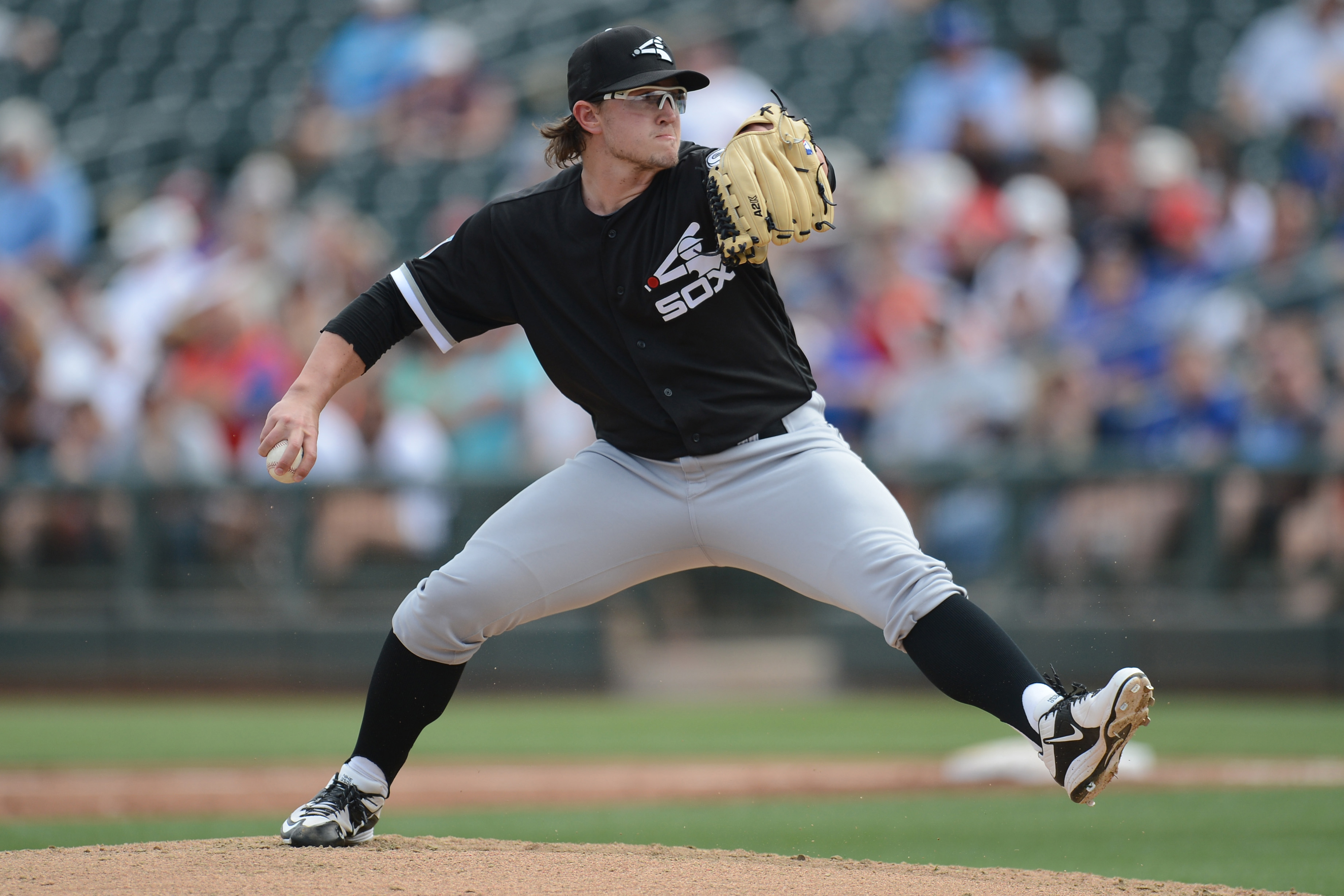The 2016 MLB Draft is less than two months away, and we’ve reached the point in the draft process where we can start to narrow down the potential players the White Sox will have to choose from with the No. 10 pick.
While we bemoaned the team’s lack of spending during the offseason, the plus side of them not dishing out for one of the top free agents on the market is that the Sox are now in a good position to get top talent when the draft begins June 9. Thanks to a poor 2015 and the qualifying offer that was given to and was declined by Jeff Samardzija, the White Sox essentially have two first round picks and three in the Top 50. Officially, their first three draft picks are Nos. 10, 26 and 49.
The White Sox will also have quite a bit of money to play with, as they’ve been allotted a bonus pool of $9,416,600, the seventh most in the league, with $3,380,600 assigned to their 10th overall pick.
A lot is still to be determined when it comes to narrowing down who the White Sox could take at the No. 10 pick. College baseball season is a bit more than half over, and the prep season is in full swing but Top Prospects lists have already begun emerging, so it’s worth taking a look at the players who are projected to be available when their turn comes.
It should be mentioned, also, that you can find full scouting reports on the players mentioned below in the Baseball Prospectus MLB Draft Guide 2016 by Christopher Crawford. It’s only $5 and worth a purchase if MLB Draft knowledge is up your alley.
Who’s No. 10?
In trying to gauge who the White Sox could take at No. 10, the first and most obvious place to look is, well, who is ranked No. 10 on various Top Prospects lists. The names that emerge include University of Tennessee third baseman Nick Senzel, Puerto Rican shortstop Delvin Perez, high school outfielder Will Benson, Vanderbilt outfielder Bryan Reynolds and Vanderbilt right-handed pitcher Jordan Sheffield.
Senzel is an elite college bat who has question marks about whether or not he can stick at third base, or if second base is his future position.
Perez is only 17-years-old and tall for a shortstop at 6-foot-3, but Crawford calls him “the best prep position player in the class. He seems the type who could rocket up rankings enough in the coming weeks that he won’t be available at No. 10.
Benson, like Perez, is young as he will turn 18 shortly after draft day. A 6-foot-6 lefty, he projects as a future left fielder with elite power.
Reynolds has plus speed, has produced with the bat during his time in college and Crawford calls him a “high-floor player.”
Sheffield, the Commadores’ next in line after Carson Fulmer a year ago, has Tommy John surgery in his past and some project he could be a reliever at the next level. His best pitch is his fastball, which has topped out at 98 mph.
The college arms
Whether you believe the White Sox specifically target near-ready college arms, or that the last two years have both been a matter of the “best player available” when they drafted being just that in Fulmer and Carlos Rodon, it’s worth monitoring the early-impact college arms the Sox could have their eye on at No. 10.
In addition to the aforementioned Sheffield, Virginia’s Connor Jones, Stanford’s Cal Quantrill, Oklahoma’s Alec Hansen and Florida’s A.J. Puk are all names you could begin hearing more about as draft day approaches.
Of those five, the two least likely to be available at No. 10 appear, for now, to be Hansen and Puk, who Crawford says are competing for the title of Best College Arm in the draft and are up there with prep lefty Jason Groome (the nearly consensus 1-1 at this point) in terms of best overall pitcher in the draft.
Others to watch
The names you’ll see thrown around will fluctuate as the year goes on, but other guys who fall into the 5-15 range include Louisville outfielder Corey Ray, Florida outfielder Buddy Reed, Mercer outfielder Kyle Lewis, prep outfielders Blake Rutherford and Mickey Moniak, and prep third baseman Bobby Dalbec.
The White Sox history of drafting and developing pitchers, as well as their inability to produce elite positional talent, has been well documented. What’s been refreshing of late has been the team’s willingness to go Best Player Available and take some risks, one of which produced current Top Prospect Tim Anderson, who was considered a somewhat risky selection in 2013 (and still is, I guess). New scouting director Nick Hostetler told Scott Merkin just that.
Likewise, with the amount of money the team has to spend, reaching for talent that will ask for money beyond that of his draft slot — like they did in drafting and signing Spencer Adams two years ago — seems like a possibility.
There’s still plenty to shake out between now and June 9, but Draft Season is upon us, and the White Sox clearly have ample opportunity to restock their farm system yet again. Who they restock it with is still to be determined.
Top Photo Credit: Joe Camporeale-USA TODAY Sports

Thanks for the insight on names to look for. Is there reason to think that the Sox instructors know how to develop batters any better than they have over the last 10+ years. Maybe it has been terrible scouting, but either way, I will dread hearing them taking a positional player in any of their top 3 picks. Any thoughts?